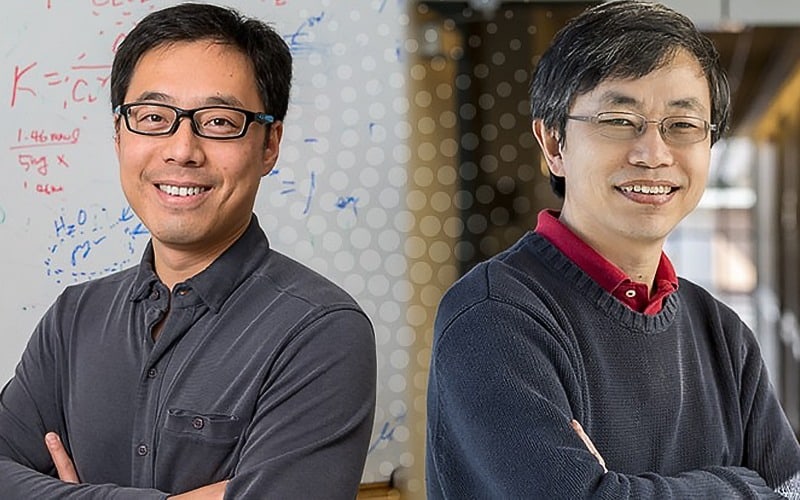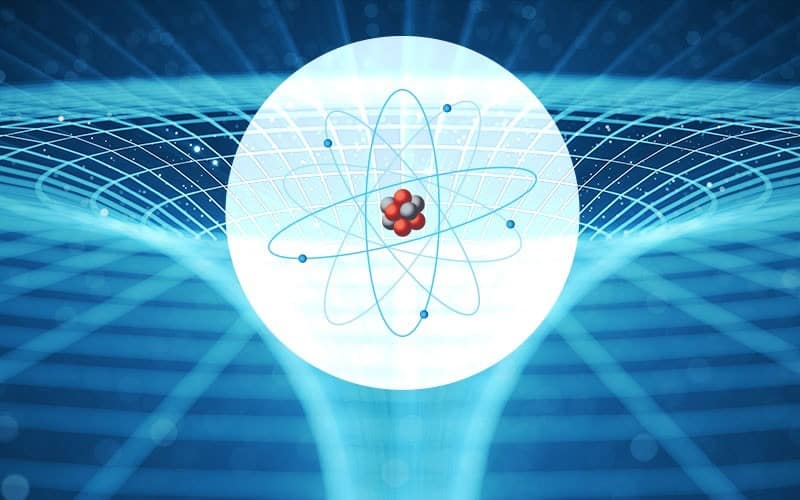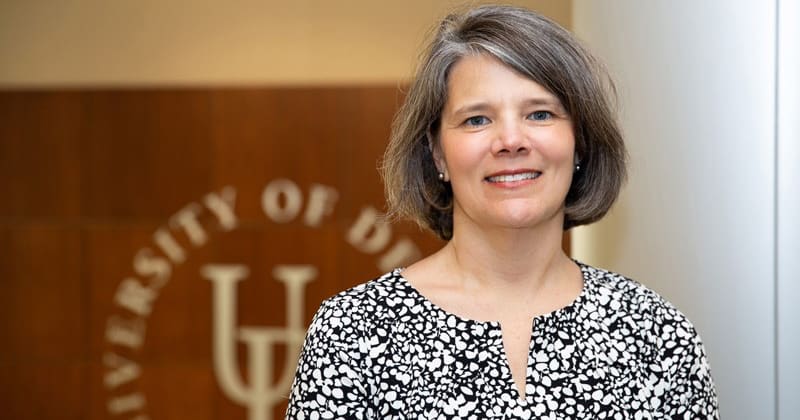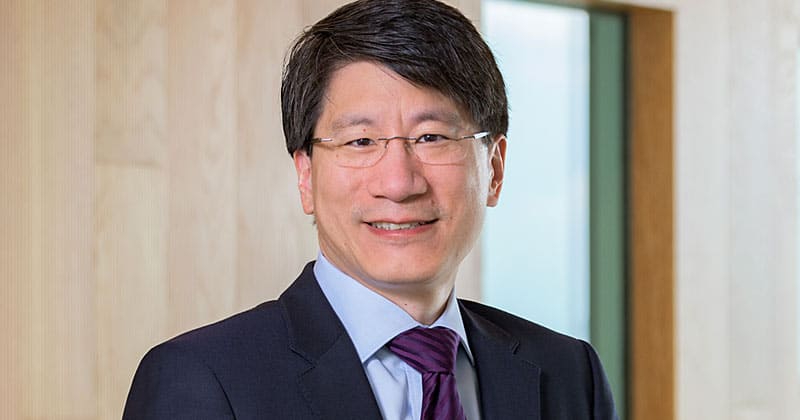 Research & Discovery
Research & Discovery
A Blog Devoted to UD Innovation, Excellence and Scholarship
Research & Discovery
A Blog Devoted to UD Innovation, Excellence and Scholarship
The right polymers for the job
ABOVE: Faculty members Bingjun Xu, left, and Yushan Yan are corresponding authors on a new paper in Nature Energy. | Photo illustration by Joy Smoker
Technology makes fuel cells more powerful, more durable, less expensive
One of the most promising clean energy technologies just got even better. Researchers from the University of Delaware have developed the most powerful, durable hydroxide exchange membrane fuel cell components on record, which they recently described in the journal Nature Energy. The key ingredient? Membranes made from poly(aryl piperidinium) polymers.
Fuel cells work by converting chemical energy into electricity, and they are a promising source of power for eco-friendly vehicles. A few fuel cell vehicles already exist on the market, including the Toyota Mirai, the Honda Clarity and the Hyundai Nexo, and more fuel cell cars are under development worldwide. The fuel cells in automobiles require the use of an expensive catalyst material, usually platinum, to hasten the chemical reactions inside. These are called proton membrane exchange fuel cells, and they contain membranes made of a fluorinated polymeric material.
For nearly two decades, Yushan Yan, Distinguished Engineering Professor of Chemical and Biomolecular Engineering, has been working to develop fuel cells that don’t require platinum catalysts and instead employ cheaper metals, such as silver or nickel. These fuel cells contain hydroxide exchange membranes, which shift the environment within fuel cells from acidic — the current standard — to alkaline. The membrane of the fuel cell is what determines the pH inside.
“We can make components much cheaper by switching from proton exchange membrane fuel cells to hydroxide exchange membrane fuel cells,” said Yan. In order to make these membranes, Yan has been on a quest to develop optimal, scalable materials. For this project, Yan enlisted the expertise of another electrochemistry expert at UD — Bingjun Xu, assistant professor of chemical and biomolecular engineering.
Hydroxide exchange polymers consist of a long chain, or backbone, and a side chain with a positively charged ion, or cation. In Yan’s past work, the side chains used in hydroxide exchange membranes contained very large positively cations, which made them stable but hindered their conductivity. The backbone material, on the other hand, was inexpensive, but not sufficiently stable.
“The question was: how do you create a new polymer that is stable both for the organic cation and the backbone at the same time, with a small cation?” said Yan.





